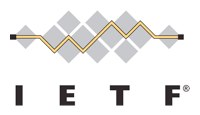![]() If you operate your own mail server and use Apache’s SpamAssassin as your anti-spam tool, here’s a weekend project for you – upgrade SpamAssassin to release 3.4.0, which, as we mentioned this past Wednesday, now includes better IPv6 support! The release also has a number of other features which make the upgrade useful.
If you operate your own mail server and use Apache’s SpamAssassin as your anti-spam tool, here’s a weekend project for you – upgrade SpamAssassin to release 3.4.0, which, as we mentioned this past Wednesday, now includes better IPv6 support! The release also has a number of other features which make the upgrade useful.
After doing that upgrade, if you have IPv6 connectivity your next step is to make sure you have the correct records in DNS to accept mail over IPv6. In DNS, the ‘MX’ records point to the host names of the mail servers that will accept email for a given domain. All you need to do to accept email over IPv6 is make sure that each host name used in MX records also has a ‘AAAA’ record with the IPv6 address for the server.
If you do not have IPv6 connectivity, your next step is to ask your ISP or server hosting provider when they will support IPv6! Preferably in a public forum (or on social media) so that they can respond and others can also join in to the request. ![]() If they won’t have IPv6 soon (and you don’t want to or can’t switch to a different hosting provider or ISP), you could try setting up an IPv6 tunnel to get IPv6 connectivity to your mail server.
If they won’t have IPv6 soon (and you don’t want to or can’t switch to a different hosting provider or ISP), you could try setting up an IPv6 tunnel to get IPv6 connectivity to your mail server.
You also do need a mail server that supports IPv6, of course, and so you may need to check that with the company or group behind your mail server. (As I note to myself that we need a page here on Deploy360 that lists IPv6-capable mail servers!)
To test out your ability to receive email over IPv6, here is an email test tool that can check if your records and servers are set correctly. (Here is an example test for ietf.org.)
If you did all this, congratulations! You’re now ready to accept email – and protect yourself from spam – over IPv6!






 The goal of the DNSSEC-Tools Project is “to create a set of software tools, patches, applications, wrappers, extensions, and plugins that will help ease the deployment of DNSSEC related technologies.” The project website is at:
The goal of the DNSSEC-Tools Project is “to create a set of software tools, patches, applications, wrappers, extensions, and plugins that will help ease the deployment of DNSSEC related technologies.” The project website is at: